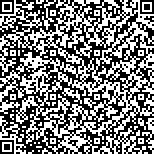| 引用本文: |
吴金鸿, 张星平, 梁政亭, 梁瑞宁, 陈旭, 贾宏林, 李振辉, 胡燕玲, 崔文军.清心宁神汤对心不藏神不寐模型大鼠的药效实验研究[J].湖南中医药大学学报,2025,45(4):588-597[点击复制] |
|
| |
|
|
| 本文已被:浏览 14次 下载 5次 |
| 清心宁神汤对心不藏神不寐模型大鼠的药效实验研究 |
| 吴金鸿,张星平,梁政亭,梁瑞宁,陈旭,贾宏林,李振辉,胡燕玲,崔文军 |
| (新疆医科大学第四临床医学院, 新疆 乌鲁木齐 830099;新疆医科大学附属中医医院, 新疆 乌鲁木齐 830099) |
| 摘要: |
| 目的 探讨清心宁神汤对于咖啡因联合4-氯-DL-苯基丙氨酸(PCPA)所致心不藏神不寐模型大鼠的治疗作用。方法 将36只SD大鼠随机分为正常组、模型组、唑吡坦组、清心宁神汤低剂量组、清心宁神汤高剂量组、通路抑制剂组,每组6只。利用咖啡因联合PCPA制备心不藏神不寐模型大鼠,正常组予等量生理盐水腹腔注射,1次/d,连续10 d;其余组于第1~7天予60 mg/kg咖啡因水溶液腹腔注射,1次/d,第8~10天予300 mg/kg PCPA皮下注射。造模结束后,唑吡坦组予以1.05 mg/(kg·d)酒石酸唑吡坦溶液灌胃,清心宁神汤低、高剂量组予14.7、29.4 g/(kg·d)清心宁神汤灌胃,通路抑制剂组予0.3 mg/(kg·d)三磷酸酰肌醇蛋白激酶抑制剂腹腔注射,正常组、模型组均以等体积生理盐水灌胃,各组均连续给药14 d。干预结束后通过旷场实验评估大鼠的自发活动和焦虑水平,评价清心宁神汤对于心不藏神不寐大鼠的睡眠和焦虑障碍的改善作用;采用ELISA法检测大鼠血清中白细胞介素-1β(IL-1β)、C反应蛋白(CRP)的含量;免疫组织化学化染色法检测大鼠脑组织中IL-1β水平;采用HE染色、尼氏染色法、劳克坚牢蓝染色法观察大鼠脑组织的病理形态变化。结果 与正常组相比,模型组大鼠,总睡眠时间(TST)、慢波睡眠(SWS)时间、快速眼动睡眠(REM)时间、移动总路程、活动总时间、中央活动时间、爬壁站立时间减少(P<0.01),粪便数量、血清中IL-1β及CRP含量、脑组织中IL-1β表达增加(P<0.01),神经组织见一定程度的结构紊乱,可见炎性细胞浸润。与模型组比,清心宁神汤低剂量组、清心宁神汤高剂量组大鼠TST、SWS时间、REM时间、移动总路程、活动总时间、中央活动时间、爬壁站立时间均增加(P<0.01),粪便数量、血清中IL-1β及CRP含量、脑组织中IL-1β表达降低(P<0.01)。综合HE染色、尼氏染色法、劳克坚牢蓝染色法结果示清心宁神汤低、高剂量组脑组织神经元排列基本整齐,细胞核大小、形态及位置基本正常,有少量胞核区域深染,可见少量胶质细胞增生,中央尼氏小体溶解较模型组均有所缓解,未见明显脱髓鞘灶,浅染区域有不同程度的改善。结论 清心宁神汤对于心不藏神不寐大鼠具有良好的治疗作用,能有效缓解失眠及焦虑障碍,降低血清中相关炎症因子的含量,改善失眠造成的脑组织中神经细胞的病理变化。 |
| 关键词: 清心宁神汤 心不藏神不寐 炎症反应 白细胞介素-1β 药效学实验 神经组织病理变化 中医不寐五神分型 |
| DOI:10.3969/j.issn.1674-070X.2025.04.002 |
| 投稿时间:2024-10-03 |
| 基金项目:国家自然科学基金项目(82160873,81960837,81560762,81260526);国家中医药管理局“十四五”高水平中医药重点学科(国中医药人教函〔2023〕85号);全国名老中医药专家传承工作室(国中医药人教函〔2022〕75号);新疆维吾尔自治区自然科学基金资助项目(2022D01D48);新疆维吾尔自治区自然科学基金(2020D01C163);新疆维吾尔自治区高校科研计划项目(XJEDU2021Y30)。 |
|
| Pharmacodynamic study of Qingxin Ningshen Decoction on a rat model of insomnia due to heart not storing spirit |
| WU Jinhong, ZHANG Xingping, LIANG Zhengting, LIANG Ruining, CHEN Xu, JIA Honglin, LI Zhenhui, HU Yanling, CUI Wenjun |
| (The Fourth Clinical College of Xinjiang Medical University, Urumqi, Xinjiang 830099, China;Traditional Chinese Medical Hospital of Xinjiang Medical University, Urumqi, Xinjiang 830099, China) |
| Abstract: |
| Objective To explore the therapeutic effects of Qingxin Ningshen Decoction (QXNSD) on a rat model with insomnia due to heart not storing spirit, induced by caffeine combined with 4-chloro-DL-phenylalanine (PCPA). Methods Thirty-six SD rats were randomly divided into a normal group, a model group, a zolpidem group, low-dose and high-dose QXNSD groups, and a pathway inhibitor group, with six rats in each group. The rat model with insomnia due to heart not storing spirit was established using caffeine and PCPA. The normal group received an equal volume of saline via intraperitoneal injection once daily for 10 consecutive days; the remaining groups received an intraperitoneal injection of 60 mg/kg caffeine solution from days 1 to 7, followed by a subcutaneous injection of 300 mg/kg PCPA from days 8 to 10. After modeling, the zolpidem group was administered 1.05 mg/(kg·d) zolpidem tartrate solution by gavage; the low- and high-dose QXNSD groups were given 14.7 and 29.4 g/(kg·d) QXNSD by gavage; and the pathway inhibitor group was given 0.3 mg/(kg·d) phosphatidylinositol kinase inhibitor by intraperitoneal injection. The normal and the model groups were gavaged with an equal volume of normal saline. All interventions were administered for 14 consecutive days. After the intervention, the open field test was conducted to assess the spontaneous activity and anxiety level of the rats, evaluating the ameliorative effects of QXNSD on sleep and anxiety disorders of rats with insomnia due to heart not storing spirit. ELISA was used to measure the levels of interleukin-1β (IL-1β) and C-reactive protein (CRP) in the serum of rats; the immunohistochemical staining was applied to assess the IL-1β levels. HE staining, Nissl staining, and Luxol fast blue staining were employed to observe pathological changes in brain tissue. Results Compared with the normal group, the model group showed significant reductions in total sleep time (TST), slow-wave sleep (SWS) time, rapid eye movement (REM) sleep time, total movement distance, total activity time, central activity time, and rearing time (P<0.01). Meanwhile, fecal pellet count, serum IL-1β and CRP levels, and IL-1β expression in brain tissue were significantly higher (P<0.01). Neurological tissue exhibited a certain degree of structural disorganization with inflammatory cell infiltration. Compared with the model group, both the low- and high-dose QXNSD groups showed significant increases in TST, SWS time, REM time, total movement distance, total activity time, central activity time, and rearing time (P<0.01), while fecal pellet count, serum IL-1β and CRP levels, and IL-1β expression in brain tissue were significantly lower (P<0.01). The results of HE staining, Nissl staining, and Luxol fast blue staining indicated that in both the low- and high-dose QXNSD groups, neuronal arrangement was largely intact, with basically normal nuclear size, shape, and position. Mild hyperchromatic nuclei and limited glial cell proliferation were observed, and central Nissl body dissolution was alleviated compared to the model group. No significant demyelination was noted, and lighter-stained areas showed varying degrees of improvement. Conclusion QXNSD exhibits significant therapeutic effects on rats with insomnia due to heart not storing spirit. It can effectively alleviate insomnia and anxiety disorders, reduce the levels of relevant inflammatory factors in the serum, and improve pathological changes in neuronal cells caused by insomnia. |
| Key words: Qingxin Ningshen Decoction insomnia due to heart not storing spirit inflammatory reaction interleukin-1β pharmacodynamics experiment neuropathological changes five spirit classification of insomnia in Chinese medicine |
|

二维码(扫一下试试看!) |
|
|
|
|




